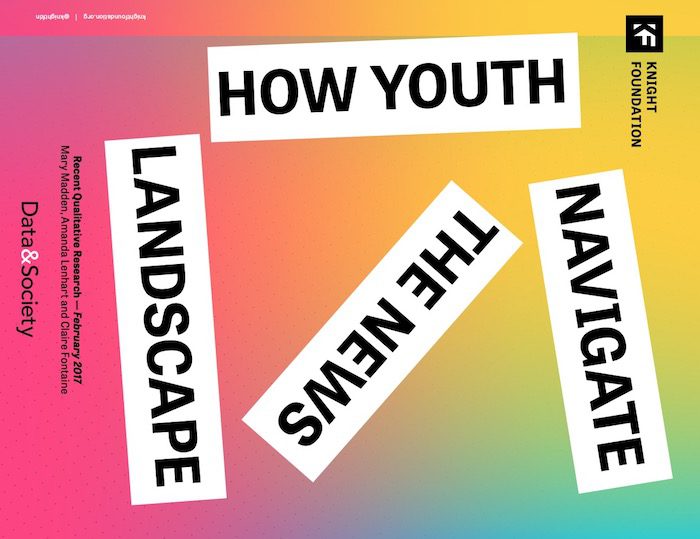
Younger Americans have a broad definition of news that expands beyond the output of traditional news organizations and includes information gleaned from social media and user-generated content, according to a report out Wednesday from the Data & Society Research Institute.
“I think you have to really just listen to everything, and then pick out what you believe and what you think is really truthful,” said a 22-year-old African-American female who participated in the survey.
The report is based on focus groups with 52 people in their teens and 20s that were conducted last summer in Chicago, Charlotte, and Philadelphia. (Disclosure: The report was funded by the Knight Foundation, which also supports Nieman Lab.) Here are some of the report’s main takeaways:
“[I was] not purposefully looking for it. Like Facebook, you get a notification for Facebook or something and you click on it and you start scrolling,” a 16-year-old white female told the researchers. “You’re going to find a bunch of news articles that you didn’t necessarily go there to see, but you’re going to see them and you’re going to click on them…I wouldn’t know a lot of the news if I didn’t go on Facebook and just look through it. Like the Orlando shootings — that’s how I found out about it, through Facebook.”
“If I don’t see it on social media, I’m not going to hear it,” a 17-year-old African-American said.
However, many of the participants said they were reluctant to share news and their thoughts on the news on social platforms publicly. Instead, many said that they will send links or screenshots to friends in messaging apps or other more private channels:
Many young people remove content from its original platform and share it through other means and channels. Some described cutting and pasting a link into a text message or screen shotting stories to send to friends through a third-party messaging app. Screen shotting was preferred by some to sending links because it provides a quick overview of the story while eliminating the need to click through advertisements.
The study says “the most striking point of consensus across the groups was their shared lack of trust in the news media.”
“Even if it’s factual, it may be sort of tainted,” a 23-year-old Hispanic and African-American female said.
Still, the participants said they tend to trust specific outlets and will often check multiple sources of information for stories they’re following. Some also said they were concerned about the algorithms that control Facebook’s News Feed.
“The problem with Facebook is if it constantly just shows you the stuff you want to see, it can create like a echo chamber, and you can really become very entrenched in your own opinion, and you won’t be able to understand people who have different views,” a 16-year-old white male said.
But with most young people using their mobile devices to consume information, the way stories are rendered on phones can also have an impact on trust levels, the study found:
Ads that are not overly intrusive, navigability on mobile phones, quick load times and having the latest details of a story are all critical factors for establishing trust that were mentioned in our groups and have been highlighted in other recent research. Trust in a news source often implies an emotional connection and a relationship of convenience.
The participants said that they tend to trust videos from protesters or participants more than coverage from traditional news media.
“I’ll believe your [citizen-captured] video before I’ll believe theirs,” a 17-year-old African American said. “Because they will tamper with theirs. Why would you tamper with yours? They tamper with theirs to get more views for it so more people will watch their channel to see the news. You don’t have to do that. You just add a video. Why would you tamper with it?”
The focus groups were conducted last summer around the time of the deaths of Alton Sterling in Louisiana and Philando Castile in Minnesota at the hands of police officers, where videos taken by bystanders differed from the official narrative put forward by the authorities.
“In situations where there is a dispute over how events played out, video is seen as a powerful (if imperfect) way to challenge mainstream media coverage of controversial news events,” the report says.
The full 30-page report is available here.